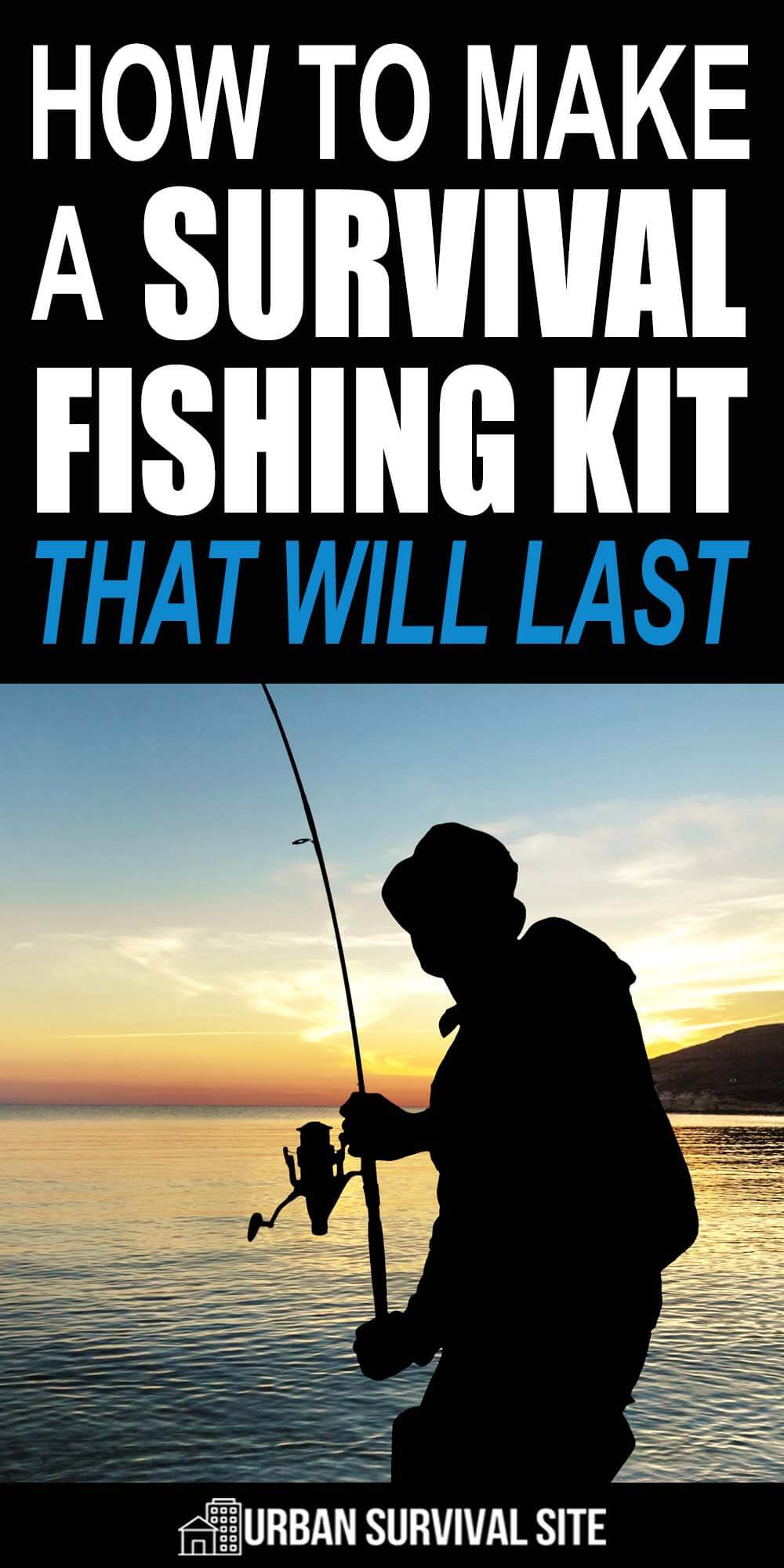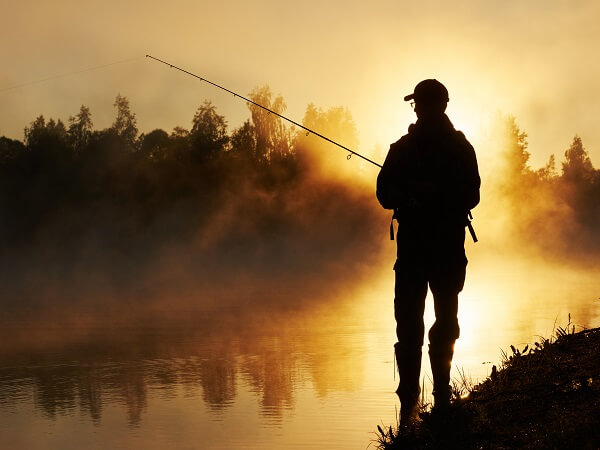The following post How To Make A Survival Fishing Kit That Will Last is available on Total Survival


 While having a food stockpile is the most important and effective strategy for ensuring you and your family don’t go hungry during a major crisis, being able to acquire food after the fact is very important as well. With that in mind, fishing is one of the most efficient means of putting food on the table in a disaster scenario.
While having a food stockpile is the most important and effective strategy for ensuring you and your family don’t go hungry during a major crisis, being able to acquire food after the fact is very important as well. With that in mind, fishing is one of the most efficient means of putting food on the table in a disaster scenario.
On the whole, there are far more locations with fish than there are locations with game animals that can be hunted. Fishing is also less time consuming than hunting and requires a little less skill. Best of all, a small fishing kit is something that can be easily packed in your bugout bag, enabling you to acquire food on the move without being weighed down by bulky supplies.
Want to save this post for later? Click Here to Pin It on Pinterest!
However, fishing does require a certain amount of gear if you want to be successful. Since fishing gear may be difficult or even impossible to acquire after a disaster has struck, it’s a good idea to put together a survival fishing kit right now while supplies are plentiful.
In this article, we’ll explain how to create an effective survival fishing kit that will still be usable if the time ever comes where your survival depends on catching fish.
The Shelf-Life of Fishing Gear
Creating a survival fishing kit is not as simple as it might seem. Buying a pole and a tackle box full of lures may be enough to set you up for a successful fishing trip next weekend, but those supplies may no longer be usable several years from now.
Many types of fishing line have a shelf-life and will weaken over time, eventually to the point that the line becomes unusable. The same is true for lures, which can melt, rot, and rust over time. Of course, live bait has an incredibly short shelf-life and really can’t be stored at all.
When putting together a survival fishing kit, it is essential to keep in mind the fact that you may be storing these supplies for many years before the time comes where you need to use them. The good news is this: if you select the right gear and store it properly, it is possible to create a kit that has a nearly indefinite shelf-life.



Items to Include in a Survival Fishing Kit
While it’s true that fish can be caught using something as simple as a piece of string and a hook made out of a paperclip, doing so is certainly not easy. Even in plentiful waters, catching fish is not guaranteed, meaning you will want to have every advantage possible at your disposal.
To make your fishing kit as effective as possible, here are the items you will want to include:
Braided Line
We’ve mentioned already that some types of fishing line last longer than others. Unlike monofilament line, braided line has a nearly indefinite shelf-life and will not grow weaker over time, making it the only choice for a survival fishing kit.
SpiderWire is one company that offers very high-quality braided line, and their line can be purchased on Amazon.
An Assortment of Hooks
One common mistake you want to avoid when putting together your survival fishing kit is only including hooks of one size. The hook size that will work best depends on the species of fish that you are targeting. Since you may not know what type of fish you will be trying to catch at any given time, it’s a good idea to include an assortment of hook sizes in your kit.
If in doubt about what hook size to use, go with a smaller hook. Large fish can be caught on small hooks, but small fish cannot be caught on large hooks. With that said, having a range of hook sizes available to choose from is still the best approach.
Fishing hook assortments that contain a range of hook sizes such as this one make it easy to acquire a wide range of hook sizes in a single, convenient package.
Weights
Weights can be used to ensure that your bait gets to the right depth. Even more importantly, though, weights make it possible to cast lightweight bait a longer distance. A worm on a hook with no weight is simply not heavy enough to cast very far. If there’s any wind, you may not be able to cast it all. With a weight attached to your line, though, this isn’t an issue.
Like hooks, weights come in a range of sizes, and purchasing an assortment like this one is your best bet.
Needle Nose Pliers
Needle nose pliers are an essential tool for any fishing trip, and they can serve a number of purposes. One of the most common scenarios where needle nose pliers will come in handy is if you are having difficulties getting the hook out of a fish’s mouth. If the fish swallows the bait or is otherwise hooked deep in the mouth, getting the hook out without pliers can be quite difficult.
Needle nose pliers can also be used for straightening hooks, crimping split shot weights onto your line, cutting your line, and more. Given that needle nose pliers are small and inexpensive, there’s no reason not to include a pair in your survival fishing kit.
Lures
Not all fish will bite a lure. Catfish, for example, are attracted mostly by smell and will often ignore lures entirely. However, there are plenty of fish species that will bite lures, and some fish such as bass and crappie are easier to catch on lures than most anything else.
Having an assortment of lures in your survival fishing kit means you will always be able to fish even if you aren’t able to find worms, small fish, or other forms of live bait. When selecting lures to include, try to take a general approach. Some lures such as spoons and small jigs can be used to catch a wide range of fish rather than being made to target a specific species, and these are the types of lures that you will want to purchase.
Strategies for Catching Fish in a Survival Scenario
Catching fish using only the supplies listed above will certainly require the right approach. You may have noticed that the list did not include a rod and reel. While certainly helpful, a fishing pole and real is simply too bulky to include in a kit that is designed for bug out scenarios. It’s a great idea to have a rod and real stashed away somewhere, but if you plan on fishing while you’re on the move, you’ll need to know how to get the job done without them.
Of course, a rod can easily be fashioned out of a small sapling or any long, narrow object. Getting a fish to the bank using this setup isn’t quite as easy as it is to bring a fish in if you have a reel, but once you’ve worn the fish down, it should be relatively simple to guide it to the bank.
However, if you are able to find live bait such as worms or a small fish that you can cut up, setting up limb lines is even more effective than making a fishing pole. All you have to do is find a limb that is hanging out over the water and tie your line to it. As long as you have the hooks, line, and bait available, you can set up as many limb lines as you want.
These limb lines do not have to be watched continuously, meaning that you can go about other tasks and check them later. Once you decide to take a limb line down, though, be careful to preserve your line and the hooks. If you set up a bunch of limb lines without recycling the fishing line, you’ll quickly blow through your supply of line.
If you are able to acquire plastic bottles such as milk jugs, you can also make use of a method called jug fishing. This method involves tying your line around the neck of a jug and throwing the jug out into the water. If a fish gets on the hook, they won’t be strong enough to pull the jug underwater for more than a few seconds. However, this strategy won’t be viable on larger bodies of water unless you have a boat, since both the wind and any fish you catch may carry the jug a long distance.
As for where to fish in a survival scenario, there’s no real way to know for sure at first glance whether a body of water has fish in it. However, there are a few signs that you can look for. You may notice fish coming to the surface of the water if you watch it for a few minutes. Noticing small bait fish swimming near the bank is also a good sign that there are larger fish in the water as well, as predators live where prey is available.
Like this post? Don’t forget to Pin It on Pinterest!
This article first appeared on urbansurvivalsite.com See it hereSource Here: How To Make A Survival Fishing Kit That Will Last

No comments:
Post a Comment